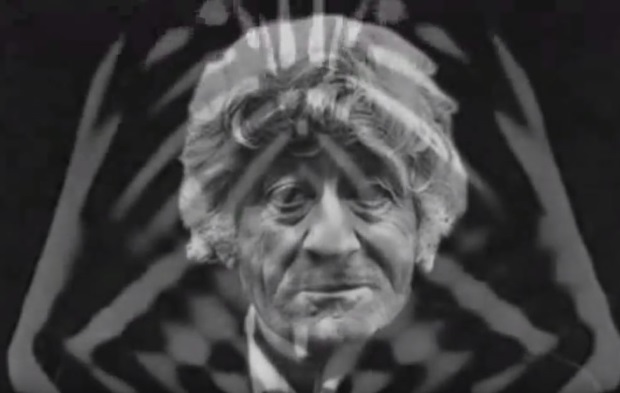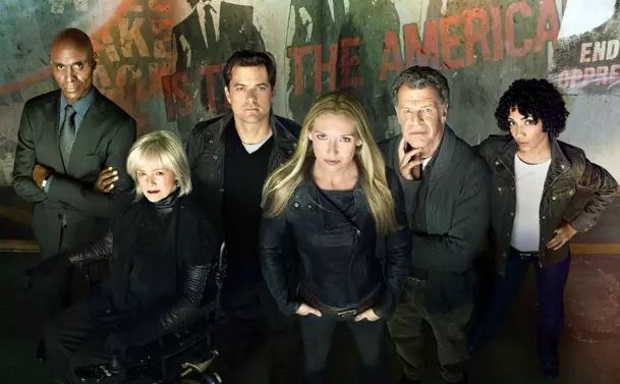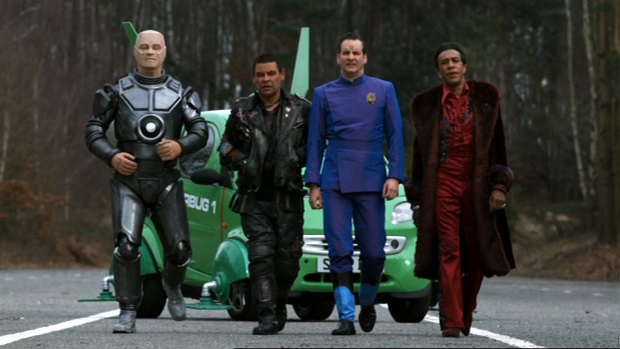When TV Shows Reinvent Themselves: How Much is Too Much?
When a TV show moves away from its core concept, it can either relight the spark or snuff it out completely...
This article comes from Den of Geek UK.
The last thing any showrunner of a long-running TV series wants is for their show to turn stale. Episode after episode after episode for years and years of nothing but the same thing will soon have audiences turning off. So surely the answer is to keep the show fresh, right? Mix things up a bit, change things around a bit, maybe even reboot the show and send it in a new direction? That’ll keep audiences happy!
Well, maybe. Rebooting or reinventing a show is a delicate thing, and there’s always a risk that audiences will simply long for the glory days when the show felt like the series they fell in love with. Shows that move their protagonists from high school to college know this only too well. As the pretense that older stars of high-school set shows are teenagers starts to wear increasingly thin as they age, to shake things up, the characters are moved on to college. New sets, new secondary characters, and new issues (often accompanied by a new look for the stars) can freshen up the show, or they can make audiences who enjoyed a high school show long for the good old days. This often affects shows aimed at kids and teens, but high school set shows with a more general audience like Buffy The Vampire Slayer experience the same problems.
Still, a soft reboot of that kind can be quite effective and outside of the high school to college move, other options are available. Battlestar Galactica (2004) never changed its core concept, but after the New Caprica arc that took place across the end of the second season and beginning of the third, various changes to the role and status of main characters and the ramp-up in the search for the ‘Final Five’ Cylons gave the show a significantly different feel. Cast changes are a common prompt for this kind of soft reboot, affecting shows like Sliders or Community, with the latter ramping up the more common high school to college transition by having some of its college students become teachers. The Walking Dead, The X-Files and numerous other shows have slightly shifted their tone and set-up as their cast changed, without entirely altering their core concept.
Some reboots, however, make the show over in a more significant way. When done well, this can give a show a new lease of life. There is no better example of how well a hard reboot can work than Doctor Who, a show that has rebooted itself numerous times over 55 years. Of course, every time the Doctor regenerates, a reboot of some kind is in order, but arguably the three biggest reboots to the show have been the transition from Patrick Troughton’s Second Doctor to Jon Pertwee’s Third Doctor in 1970, the failed attempt to reboot the series as a US/UK hybrid in 1996, and the re-launch of the series in 2005. The latter two are well-known, but the significance of the reboot in 1970 shouldn’t be under-rated. A black and white series about an alien and his companions travelling across all of time and space suddenly became a color series about an alien trapped on Earth in the (then future) 1980s, helping the army to fight monsters, and somehow they made it work.

Not all hard reboots go so well, though. Meeting audience expectations is the real key to success; when you set up a show in a pilot, you make a promise to the audience that if they tune in each week, this is the show they’ll see. If you break that promise, they may turn off just as quickly as they do if it becomes stale.
The key, then, is keeping the promise initially made to the audience about what the show would be despite the changes. When Angel: The Series rebooted itself in season five and put its heroic leads in charge of the evil law firm they had been fighting all these years, results were mixed. The change shook up the show and opened up new storylines, but even though the characters constantly questioned whether they had made the right choice, taking over their enemies’ business could be seen as a fundamental betrayal of what the show was and what it was about.
One of the most common methods of rebooting a show is to shift the timeline in some way, whether it’s a small shift, like Parks And Recreation and New Girl setting their final seasons after a three-year time gap (in both cases, allowing the show to avoid a lengthy pregnancy storyline) or a much bigger shift. Once Upon A Time, for example, moved forward in time long enough that its young character Henry Mills had grown up into an adult with an (unknown) child of his own. Season seven also shifted the setting of the series from the small town of Storybrooke to the streets of Seattle, and piled third or fourth identities onto characters already suffering from severe multiple personality issues thanks to half a dozen different curses. Fan reaction was mixed, as while the show retained the key concept of a curse and characters with multiple identities, the feel of the show was very different.
Similar time-shifts affected JJ Abrams’ Fringe in another example of a show going to a completely different place in its final season. Fringe was one of those shows that re-invented itself on a regular basis anyway, being an X-Files clone in season one, focused on two specific parallel dimensions in seasons and two and three, and playing around with alternate timelines and realities in season four. During the first two seasons, this was part of a clearly well thought out and carefully structured plan, built on highly satisfying revelations and clues dropped from early on.
However, one common reason for a hard reboot, besides casting changes, is that a major story arc has concluded and the writers need to take the show to a new place to keep it going. Through seasons three and four, it felt more like the writers of Fringe were scrabbling to find their way now that their goal had been reached, as significant plot points (who will kill Oliva?) and even main characters’ children were written out or disappeared without trace, though the key concepts of the show remained in place.

Then in season five, the series took a drastically different approach. The entire short season was set in a future timeline (complete with a grown-up child of main characters who look the same age as their parents, a common side effect of this sort of decision) and largely dropped the parallel dimension story that had dominated the show. A contemporary weird science show had become a futuristic dystopian show, and viewer reaction was really dependent on each individual viewer’s fondness for future dystopias.
There’s always a danger of going too far with a hard reboot, and changing the show so completely that fans lose interest entirely because that promise made to the audience in the pilot has been broken. Another JJ Abrams show, Alias, became notorious for changing so much it was an almost entirely different show.
Like Fringe, Alias featured a major reveal and change to its core concept late in season two, when Sidney’s identity was revealed, and the show started to flounder after that. In season three, Sidney got amnesia and lost her memories of what appear to have been two very eventful years; in season four, she became a black ops agent, and in season five, her new fiancée revealed himself to be someone entirely different to what she thought, Sloane tried to become immortal and the whole thing became increasingly bizarre. Other shows that have gone to some weird places due to cast changes, outside influences, or sheer lack of ideas on the part of writers include Heroes (infamously de-railed by a combination of not knowing what to do after season one’s arc was concluded, and a badly timed writers’ strike) and, to an extent, Lost (another JJ Abrams show – this is becoming a habit).
further reading – Lost: A History of the Fandom
Another danger with rebooting a show is that the writers start to develop a habit. As their first reboot gets inevitably mixed reactions, they try to correct the mistake by rebooting again, and again, until eventually they realise that the audience just want to watch the show in its original form, and try to go backwards. Red Dwarf, for example, has rebooted itself no less than six times over 12 (short) series, with varying results. The first reboot was most successful, and this seems to have been the source of (co)-writer Doug Naylor’s reboot addiction. Between Red Dwarf II and Red Dwarf III, the series was transformed from a quiet, studio-bound comic study of two main characters to a more action-adventure influenced sci-fi comedy with a bigger cast, plus more superficial changes including new sets and one main character having a sex change. The change was for the better, as the livelier pace of series III-V, combined with some hard sci-fi tropes used well, produced some classic comedy.
Each successive reboot, however, produced diminishing returns. Red Dwarf VI still largely represented the show at a high point, but the lack of the titular ship is hard felt. Cast changes and some dubious new CGI in Red Dwarf VII resulted in some audience dissatisfaction, and then Red Dwarf VIII completely changed the entire concept of the show, adding numerous more cast members to Lister’s ‘last human being alive’. The mini-series Back To Earth tried to ape one of the show’s best episodes with extremely limited success, until the final reboot, giving us Red Dwarf X-XII, went back to the core concepts of III-V and recovered itself somewhat in fans’ eyes by returning to the form of the show they most loved.

Of course, some shows have reboots built in to their concept from the start, like American Horror Story, which tells one self-contained story per season, each series of Blackadder, set in a different timeframe, or anthology shows like Inside No. 9 or Black Mirror. When there is no promise to the audience to break, writers have more freedom to play around with different ideas and concepts. Even Quantum Leap or Doctor Who, while not anthology shows in the strictest sense, have such flexible formats that every new episode is, in its own way, a soft reboot.
Other shows, meanwhile, play it safe by not rebooting, and staying essentially the same. Although they risk becoming stale, this is often the safer option. Knock The Big Bang Theory and its sitcom status quo all you like, but it’s phenomenally successful, and we recently talked about Supernatural’s clever blend of on-going change with, at the core of the show, more of the same.
Several current shows are in the middle of soft or hard reboots, while fans watch cautiously to see how successful they will be. Star Trek: Discovery, for example, has gone for a soft reboot, subtly altering the tone of the show through the first season and featuring a classic time skip going into the second, so far to praise and even some relief from fans.
The Good Place, meanwhile, is in the middle of its second hard reboot, a result once again of the ‘we finished the story arc’ problem. After the big reveal at the end of season one, the show had to change direction in season two to keep itself going, and then do so again in season three; it may be about to shift gears yet again part-way through the third season. Ironically, too many changes can actually make a show stale, as audiences stop engaging in a narrative that they know is about to shift direction once again. Whether The Good Place has shifted too far from its core concept, or twisted its narrative one too many times in its effort keep its main characters together, only time will tell.
